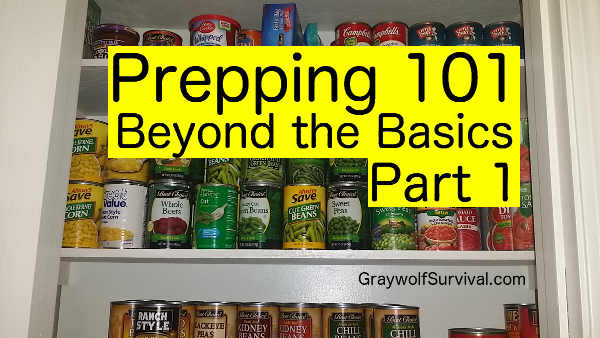 In the first article of this three part series, we covered the basics of beginning prepping. We discussed putting plans in place that would help you in an emergency situation. We talked getting and maintaining a 3 day supply of food and water. We went over some other items to keep on hand.
In the first article of this three part series, we covered the basics of beginning prepping. We discussed putting plans in place that would help you in an emergency situation. We talked getting and maintaining a 3 day supply of food and water. We went over some other items to keep on hand.
Hopefully, you have reached that point. (Or are in the process of doing so.) For some, that might be good enough. I mean, we have never had a TEOTWAWKI (The End of the World as We Know It) event in our life time. So being able to survive until help arrives is their goal.
But if you are like me, you realize that we have had some near misses. EMP/CMEs are a possibility and we had a very close call in July of 2012. In 1983, the Russians and Americans were mere moments from an accidental nuclear war. (“Glasnost” now seems like a distant memory.) Another financial collapse is also a potential problem. In these types of situations, a 3 day supply of food and water may not be enough.
So if you are ready to start some long term planning and preparations then this is a good place to begin.
A word or two of advice before we dig in. As in the previous article, I will caution you against planning for the worst case scenario only or thinking that you know what will happen in a disaster situation. You and your plans need to remain flexible, so don’t lock yourself into ridged thinking and planning.
Also, I would skip those that are fear mongering. Fear sells, which is why so many in the media and survival vendors peddle it. Avoid it and do not make decisions based upon it. I don’t prep based upon fear. I prep so that if disaster strikes, I do not have to fear.
To me, fear has two meanings:
Forget Everything And Run
Face Everything And Rise
You decide.
Water, Water Everywhere
As you continue to build up your food and water storage, you might begin to encounter an issue or two. First, storing more food and water can take up A LOT of space. But here are some hints and tips for finding storage space.
Another problem could be trying to rotate all of your items. Constantly rotating a year’s worth of food and water might prove to be very time consuming.
You could buy several buckets worth of Mountain House meals and set them aside. They can last for years. For me, a better option would be to begin looking at renewable sources of food and water. There hopefully isn’t any reason not to have a vegetable garden in your back yard or to be able to grow your own herbs for flavor and medicine. And many cities will now allow you to raise chickens in your back yard as well. (Check local ordinances.) Both would allow you to supplement your food stores with fresh, renewable food.
As for water, we use rain barrels to catch rain from our gutters around our homestead. This is a great way we ensure we have a renewable source of water. Here is a great link showing you how to catch and store the water.
Fuzzy Math, Two is One
Any prepper worth his salt lives by the old saying, “Two is one and one is none.” This of course stems from the old adage about “Murphy’s law”. So having more than one item ensures that in a disaster, when Murphy ’s Law applies and your flash light inexplicably fails, you will have a back-up.
If you read my Beginner’s article last week, you will remember me mentioning that I have several flash lights and radios. Not only that, they are powered by multiple means. (Wall-mount rechargeable, batteries, and even hand crank.) For me, I like knowing that I have “manual” redundancy for much of my gear.
In addition, some of my items are multi-use items. One of the AM/FM radio with NOAA weather I have is hand crank powered that also has a flashlight and a means to recharge portable devices such as my cell phone. In addition, my Goal Zero solar panels will recharge my AA and AAA batteries, my cell phone, and one of my rechargeable flash lights.
Is that overkill? Well when you consider that I could recharge not just my items, but also some items belonging to my family I don’t think it is.
Another reason I have multiple sets of gear is because in an emergency, there is a chance that some of my family or friends might need some gear. Trust me, it’s easier to loan them an extra than it is to watch them walk off with your only knife.
Wild Blue Yonder
In my last article, I briefly touched on the subjects of Every Day Carry (EDC) and Bug Out Bags. Now might be a good time to start preparing these. The above links are great references and should give you some ideas of what you need.
In reality, YOU need to decide not just what you need to pack, but also why you are packing it. I cannot tell you everything that you should pack because I do not know what your situation is. The bug out bag for a family in the Bitter Root mountains of Montana will be somewhat different than the bug out bag of a family in south Florida.
Bugging out to the unknown is the last thing you want to do. Only in the most extreme situations would I ever do that. Instead, I have a bag designed to get me from work back home, or from home to my homestead location.
In the worst case scenario I could go from work straight to my bug out location. But I’m a single full time dad, so I’m heading home to get my son in most all situations. And as always, I have plans in place for these types of scenarios. My bag is packed accordingly.
Here is a great link giving you tips on how to pack your bag.
Here is a link on 3 vital elements your bag needs to have!
Boom Goes the Dynamite
In the first article I offered links about needing a firearm, and some helpful tips on picking out your firearm(s). Hopefully you have a firearm, and CONSISTENTLY TRAINING WITH IT! (I cannot stress that enough.)
You should also be training your family. Guns in the house means that everyone in the home needs to know gun safety. They need to understand that a firearm is a tool, and if properly trained they do not need to fear it. Hopefully there are some politicians on the east and west coast reading this also!!!
I have taken my kids out shooting so much it now kind of bores them. (Ugh…do we have to go to the range AGAIN?!?!) But they know gun safety inside and out. And the “mystique” and curiosity factor about guns is now completely gone. I do not worry about them picking up my firearms and playing with them. I have started teaching gun safety to nieces, nephews, and even my daughter’s boyfriend.
You might be asking yourself, how many firearms do I need? There are plenty of articles out there telling you that you need this many rifles, so many shotguns, and X number of pistols. But the truth is, you need to decide. Everyone’s situation is different. Be sure to check your local and state ordinances on firearms before purchasing.
If pressed for my opinion on the matter, I would recommend, at minimum, one long gun (rifle/shotgun) and one pistol as the best weapons to start with to defend your home. The long gun serves a purpose for hunting, and self-defense at longer ranges, while the pistol is easier to conceal and is better for self-defense in close quarters.
Personally, I have multiple firearms, and will purchase more in the future. Some are issued to me by my police department, and some I bought just for fun. But each would play an important role for my family’s survival if it came down to it. Here is a list to give you an idea.
- Stag 3GL rifle (W/ Trijicon TA01 optic) – AR 15 – Primary defense rifle, which I also carry while on duty
- Glock 23 Gen 4 pistol (W/ TLR1 tact light) – Primary side arm, carry on duty
- S&W Bodyguard – Back up pistol and carry off-duty (easier to conceal)
- Remington Police Magnum shotgun (W/ tactical light) – 12 gauge – Dept issued. Carry on duty and primary home defense weapon
- Benelli SuperNova tactical 12 gauge – Was primary home defense and duty shotgun before I was issued the Remington. (Benelli has ‘18 inch barrel, Remington has modified ’14 inch barrel and fits in the gun racks in our patrol units) I now keep the Benelli out at my homestead. Could loan to family in a SHTF event.
- Stoeger Double barrel 12 gauge shotgun – coach gun – a “fun” gun, great defensive shotgun if need be
- Rossi .357 revolver – second gun I ever purchased. Some sentimental value. Could loan to family or friends in a SHTF situation
- Taurus TP22 – .22 pistol. Used for small game, rabbits
In NO way am I saying that you need this many guns. The above list is a sizable investment, and that is not even counting the ammunition I have stored. (More on that in a minute.) But I have acquired them over the course of many years. Each serves a purpose and some are tools of my job that I carry every day. And let’s face it, I’m a gun enthusiast and enjoy the shooting sports.
A few words of advice. I would stick with firearm calibers that are quite common. All of the firearms I own are very common calibers and it is fairly easy to find ammunition for them. (Even the Bodyguard, which shoots a .380 round is not an uncommon bullet.)
There are two reasons for this. First, common ammo sizes are typically less expensive than uncommon or rare calibers. And second, common calibers are produced in far greater quantities and will be easier to find. (Now and should it ever hit the fan.)
Also keep in mind that while firearms can play an important role in protection and self defense, there are WAY more important things to being prepared than just guns and ammo. Things like food, water, shelter, and planning are much more important in the long term. Avoiding conflict should be a primary goal. You firearms are the backup plan.
If you would like to read more on prepper firearms, click here for Part I of the follow up article. I try to go a bit more in depth on EDC and home defense firearms. In Part II, I talk more about firearms for a long term survival scenario.
Your firearm(s) are gloried paper weights without ammunition. Hopefully by now you have at least a few boxes set back. But you might be wondering, “How much ammo do I need? How do I store it?”
I have read numerous articles detailing how much ammunition you need to store. A few even break it down and seemed thought out and logical to me. But ultimately you need to decide how much you feel comfortable having on hand, and how much you can reasonably and safely store.
For me, I have at least 1000 rounds per caliber for the most part. For the 12 gauge shotguns, I have around 1200 rounds roughly divided into rifled slug, buckshot, and bird shot. For the .22, I have almost 4000 rounds and continue to purchase it regularly. (My family has several .22 rifles.)
While that might seem excessive to some, this ammo is not just for me, but also for members of my family and their firearms. For the most part, my family has purchased firearms in calibers that I already stock. (Probably so that they do not have to purchase the ammo…cheap bastards!! LOL)
In other cases, I store significantly less than 1000 rounds. For example, I have about 200 round of .308 stored. This is not for me, but for my father who owns a Winchester .308 rifle. (I do not own a .308.) I also have about 250 rounds of .357/.38 ammo for the revolver. Because it does not have a primary role for me, I do not have as much ammo stored for it.
The reason I have this much stocked isn’t just for a possible TEOTWAWKI event, but more for a time where another lunatic with a gun walks into a school and starts shooting. Unfortunately it’s just a matter of time. And also unfortunately, the “knee-jerk” politicians and media will start “banging the gun control drum” again instead of trying to address the real issue. (Mental health). As a result I could see a time where firearms or even ammo becomes increasingly difficult to obtain.
The beauty of ammunition is that if it is stored correctly, it could last a generation or more. (It will also increase in value over time.)
Keep your Powder Dry
So let’s cover ammunition storage. I’m going to go over a few basic rules, and then I’ll break down how I store my ammo.
Humidity and moisture will damage and destroy your ammo stores. You need to keep your storage (especially long term) dry. Hence a damp basement is not the place you want to store your ammo. Also, don’t store your ammo by solvents such as oil, ammonia, or things like paint thinner. These items could seep into your ammo and cause you problems.
Avoid high heat. Many experts believe that temperatures reaching close to 150 F could damage your ammo. (Car trunks can reach this temperature.) Experts tend not to be as concerned with lower temps, but temperature swings can be a problem. So if where you live it reaches 100 F in the summer and 30 F in the winter, long term storage in your garage, outside shed, or lake cabin may not be a good idea.
If you see signs of corrosion on your rounds (be it the bullet or the cartridge), discard the ammo as it could be unsafe to shoot.
 So how do I store my ammo? Well for starters, I purchased several military ammo cans (30 cal.) I checked the cans thoroughly to ensure there was no rust and that the rubber seals on the inside were in good condition.
So how do I store my ammo? Well for starters, I purchased several military ammo cans (30 cal.) I checked the cans thoroughly to ensure there was no rust and that the rubber seals on the inside were in good condition.
For the most part, I give each caliber its own can(s). I leave the ammo in its original container. When the can is full, I put a silicone gel pack in the can to absorb some of the oxygen, close the can, zip tie it shut, and then put a piece of duct tape on top. I write the ammo type and the quantity on the tape. The zip tie lets me know that the contents are accurate and have not been tampered with.
I then place the ammo cans in an old refrigerator….unplugged of course. This is stored in one of our barns at my homestead. The barns are not climate controlled, but that is ok. The old fridge keeps the moisture out, and keeps the ammo reasonably cool all year long. I was a bit worried this past summer, when temperatures reached over 100 F. But in the hot August afternoon, I would open the fridge and the cans still felt slightly cool to the touch.
of our barns at my homestead. The barns are not climate controlled, but that is ok. The old fridge keeps the moisture out, and keeps the ammo reasonably cool all year long. I was a bit worried this past summer, when temperatures reached over 100 F. But in the hot August afternoon, I would open the fridge and the cans still felt slightly cool to the touch.
One last thing to consider is moving your ammo should you have to bug out. Ammo can get real heavy and bulky real quick. So trying to bug out with all your ammo isn’t something I would recommend. I would have plans in place should you find yourself having to leave. (As I mentioned, my ammo is stored at my bug out location.)
Look for part III of this series in the coming days.
If you have questions or comments, you can email me at planandprepared@gmail.com


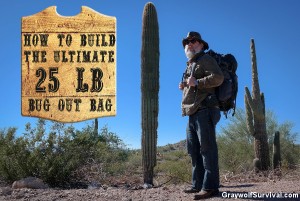

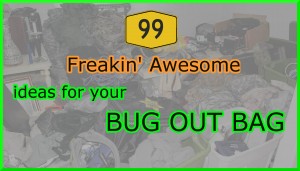

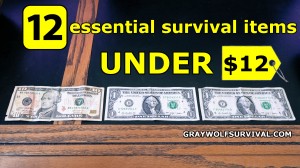
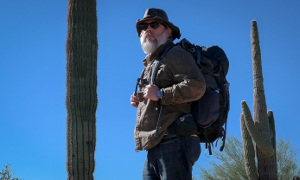
Excellent article james